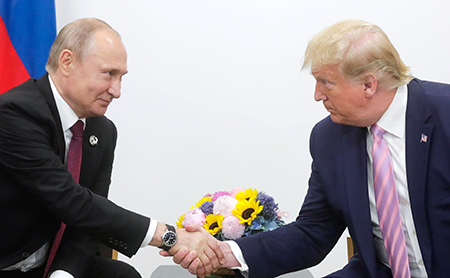Trump’s Pivot to Russia and the Impact on the Global Nuclear Landscape
May 2025

In addition to domestic upheaval, U.S. President Donald Trump has unleashed what could prove to be a major geopolitical realignment since returning to the White House in January. After 80 years in which the United States led the NATO alliance in setting the terms for international economic management and security, Trump has disparaged allies and shown an unabashed preference for Russian President Vladimir Putin, whom Washington has long viewed as its primary strategic nuclear-armed competitor. Trump has backed Russia at the UN Security Council, blamed Kyiv rather than Moscow for the war in Ukraine, cancelled U.S. membership in various international organizations and hinted he may abandon the U.S. military command of NATO. This radical disruption is raising profound questions about future global nuclear security arrangements and forcing key U.S. allies to prepare for a day in which the United States may no longer be a partner, much less a trusted protector. Arms Control Today asked experts Adam Scheinman, Ulrich Kühn, and Toby Dalton to begin exploring the impact of Trump’s pivot to Russia, respectively, on the nuclear Nonproliferation Treaty and the New Strategic Arms Reduction Treaty; the possibility of Europe developing an independent nuclear deterrent; and the possibility of a security shake-up in Asia.—CAROL GIACOMO
A Stress Test for the NPT
By Adam Scheinman
Is Europe Moving to an Independent Nuclear Deterrent?
By Ulrich Kühn
How Trump’s Turn Toward Putin Could Shake Up Asia
By Toby Dalton
